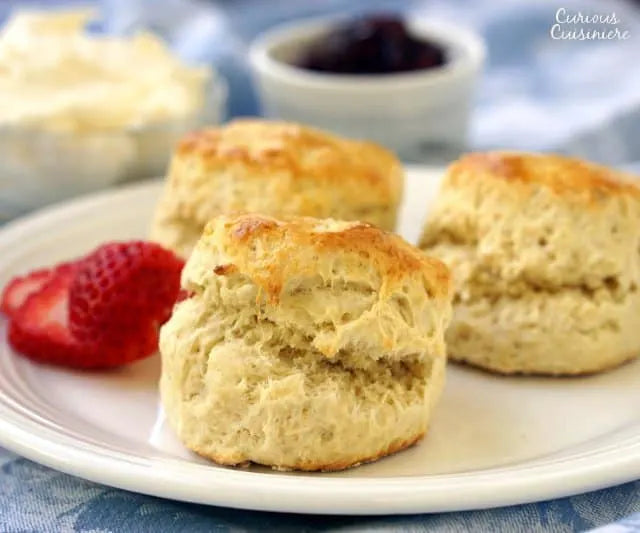Authentic British Scones

An authentic British Scone is a perfect accompaniment to your warming cup of tea, particularly if you have some clotted cream and jam to serve it with!
What Is A Scone?
When you hear the word “scone” do you think of a fancy British tea-time spread? Or do you think of the sugar-dusted pastries in the Starbucks display case that you might be tempted to grab to go along with your morning coffee? Authentic British scones aren’t eaten for breakfast. Rather, they are served with tea as a light snack for “cream tea” in the mid-morning or with afternoon tea. (Not to be confused with “high tea,” which includes more savory nibbles.)

Is A Scone A Biscuit?
When you first try an authentic British scone, you might be tempted to think of it as a biscuit. (Unless, of course, you’re from the southern US, where biscuit-making is an art. No real scone would fool a Southerner as a biscuit, that’s for sure.) But, you can’t deny that the two are similar. The basic ingredients for biscuits and scones really are the same: flour, leavening, a little salt, some fat, milk, and maybe a little sugar. The process too is similar: cut the fat into the dry ingredients, add the liquid, roll, and bake. The difference comes down to a subtly in texture and how they are served. British scones are denser, slightly drier, and more crumbly than biscuits. They typically contain much less butter than biscuits as well. While biscuits most likely originated from the British scone, they have been transformed and now are the scone’s buttery cousin. Because of the extra butter, biscuits should be light and fluffy with tender layers. While scones are spread with jam and clotted cream (which you can make yourself as oven clotted cream or as slow cooker clotted cream), biscuits more commonly find themselves in savory applications, like with sausage gravy or an egg and bacon.
Ingredients:

Instructions
Recipe from Curious Cuisiniere.
